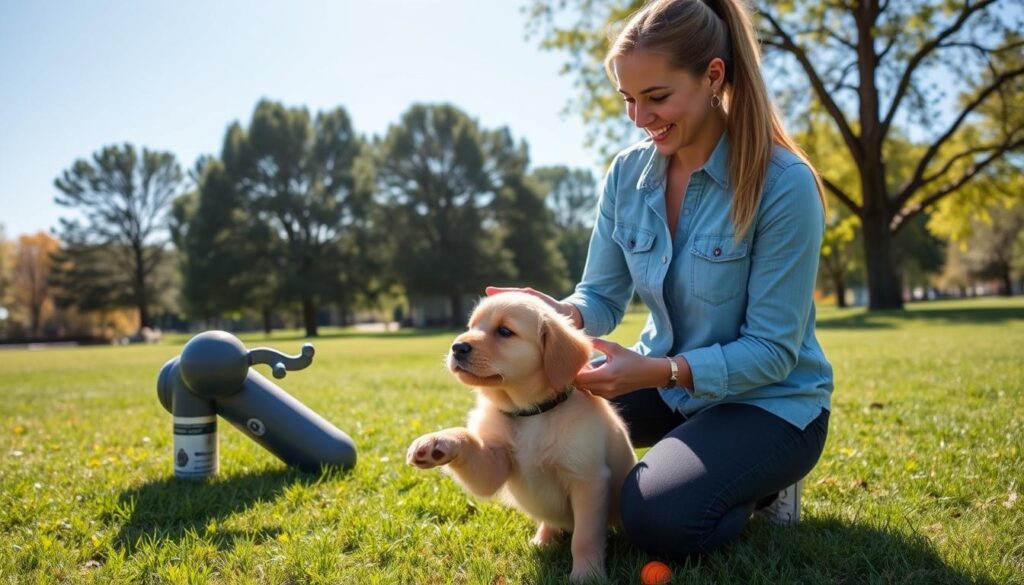Unlock your puppy’s potential with effective collar training strategies. Training your puppy is essential for building good behavior and a strong bond. Using the right collar techniques can make all the difference in raising a well-adjusted dog.
The Importance of Early Training and Positive Reinforcement
Starting training early sets the stage for a well-behaved adult dog. Young puppies have the best chance to learn new commands and behaviors when training begins at a young age. Positive reinforcement, like treats or praise, makes learning fun. This encourages puppies to repeat desired behaviors.
Common Collar Mistakes and How to Avoid Them
Many puppy owners make simple mistakes with collar training. Here are a few to watch out for:
- Using the Wrong Collar: Ensure you pick one suited for your puppy’s needs.
- Poor Fit: A collar that’s too tight can cause discomfort, while one that’s too loose can slip off.
- Inconsistency: Using different commands or techniques can confuse your puppy.
Avoiding these mistakes allows for smoother training sessions and happier puppies.
Setting Realistic Expectations and Goals for Your Puppy
Every puppy learns at their own pace. Set achievable goals based on your puppy’s age and breed. This means patience is crucial. Celebrate small victories to keep both you and your puppy motivated.
Choosing the Right Collar for Your Puppy
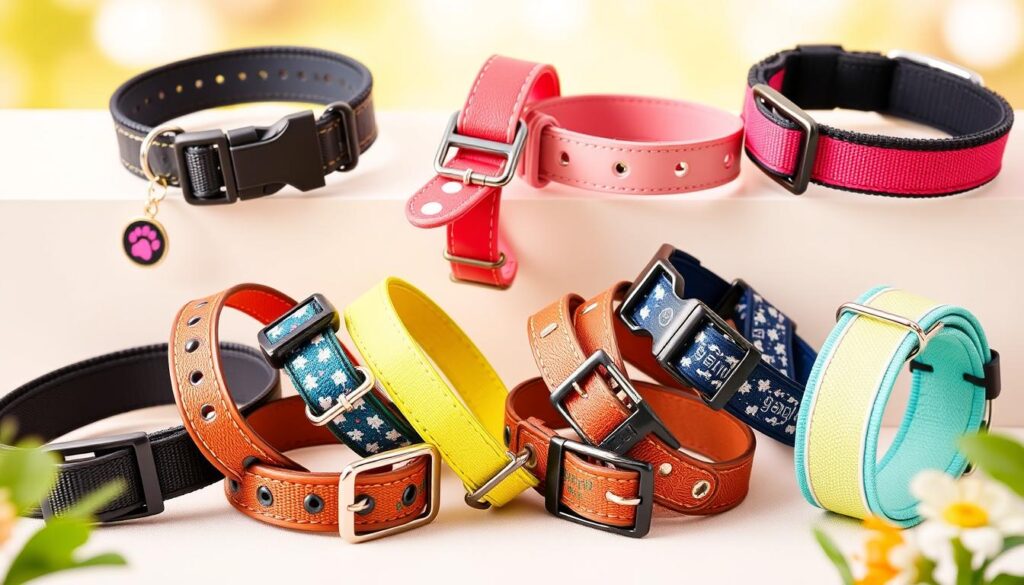
Flat Collars vs. Harnesses: Understanding the Differences
Flat collars are great for everyday wear. They hold ID tags and are typically used for leash walking. Harnesses are ideal for puppies prone to pulling, as they distribute pressure more evenly across the body. Each option has its merits.
Considering Your Puppy’s Breed, Size, and Temperament
Different breeds and sizes require specific collar types. For instance:
- Small Breeds: Lightweight collars prevent choking risks.
- Large Breeds: Sturdy collars handle strength without breaking.
Match the collar to your puppy’s individual characteristics for the best results.
The Importance of Proper Collar Fit
A proper collar fit is essential for safety and effectiveness. Place two fingers comfortably under the collar. If you can’t, it’s too tight. A loose collar can slip off easily. Regularly check the fit as your puppy grows.
Basic Obedience Training with a Collar
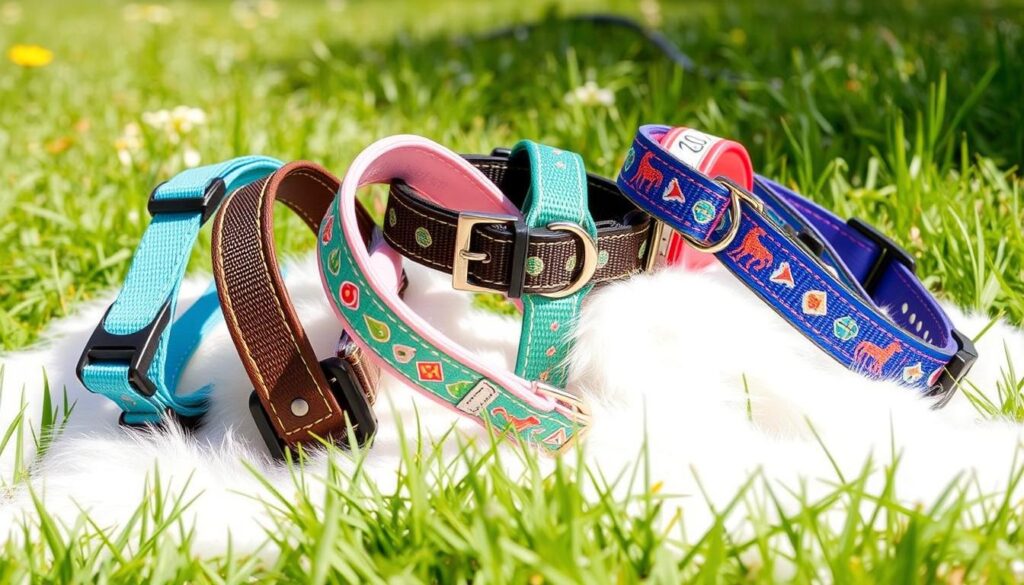
Teaching Your Puppy to Walk Loose-Leash
Start by letting your puppy sniff the surroundings. If they pull, stop walking. Call them back and reward them when they’re next to you. Gradually extend walking distances to encourage loose-leash walking.
Mastering the “Sit,” “Stay,” and “Come” Commands
Sit: Hold a treat above the puppy’s head, moving it back to encourage them to sit. Once they do, reward immediately.
Stay: After your puppy sits, hold your palm out and say “stay.” Gradually increase the distance before returning with praise.
Come: Use a cheerful voice to call your puppy. Back away to encourage them to follow. Reward their return for positive reinforcement.
Addressing Pulling and Jumping Behaviors
For pulling, use a collar that offers better control like a front-clip harness. Jumping can be curtailed by ignoring the behavior. When your puppy calms down, give attention or treats.
Advanced Collar Training Techniques
Using a Gentle Leader or Head Halter (if appropriate)
Gentle leaders guide your puppy’s head. This can reduce pulling and promote better focus during walks. Introduce it gradually to avoid resistance.
Positive Reinforcement Strategies for Effective Collar Training
Use treats or toys to reward good behavior during training. This builds positive associations with the collar and commands, motivating your puppy to learn.
Addressing Specific Behavioral Issues with Collar Training
Identify specific problems like barking at strangers or chasing small animals. Use the collar to redirect focus back to you when these behaviors occur. Consistency is essential for success.
Troubleshooting Common Collar Training Problems
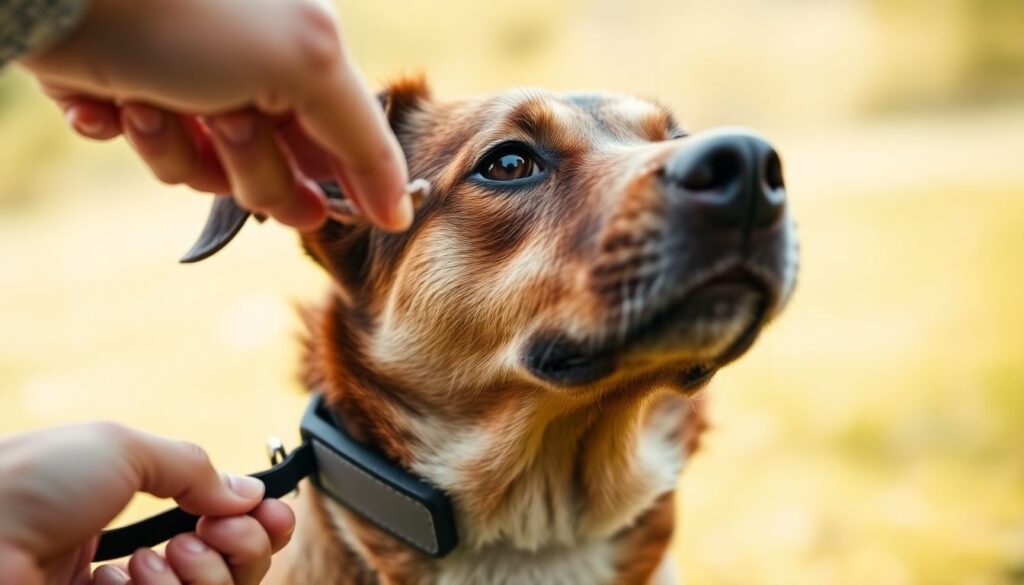
Dealing with Excessive Pulling and Lunging
If your puppy pulls, stop walking and wait until they settle. Slow movements and gentle commands help regain focus. Practice patience, as this can take time.
Managing Distractions During Training
Use treats to distract your puppy from stimuli. Start training in a quiet area and gradually introduce distractions as they learn.
Understanding and Addressing Fear-Based Behaviors
If your puppy shows fear, don’t force them into situations. Gradually desensitize them with treats and calming techniques. Always proceed at their pace.
Maintaining Consistency and Building a Strong Bond
The Importance of Daily Training Sessions
Daily short training sessions foster quick learning. Consistent practice helps solidify commands and routines.
Creating a Positive and Rewarding Learning Environment
Use praise, play, and treats to reward your puppy during training. This creates a welcoming atmosphere that encourages learning.
Seeking Professional Help When Needed
If you’re unsure of how to handle specific issues, consider professional training. Trained experts offer valuable strategies tailored to your puppy’s needs.
Conclusion: A Well-Trained Puppy, a Happy Life
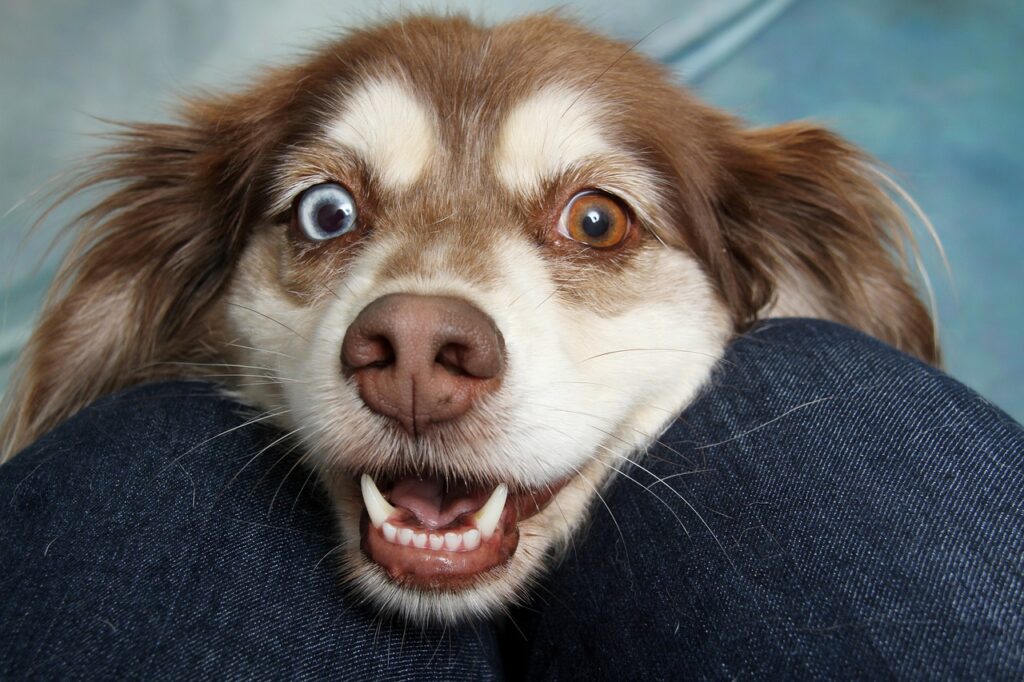
A well-trained puppy leads to a happy home for both you and your dog. By following effective collar training techniques, you can nurture good behavior, build trust, and foster a strong bond.
Key Takeaways: Recap of Essential Collar Training Tips
- Start early with positive reinforcement.
- Choose the right collar for your puppy’s size and needs.
- Be consistent in training and set realistic goals.
- Gradually introduce distractions and keep training positive.
Resources for Further Learning and Support
- Books on puppy training
- Professional dog trainers
- Online courses and webinars
This guidance will steer your training journey toward success, ensuring a delightful experience with your furry friend.
